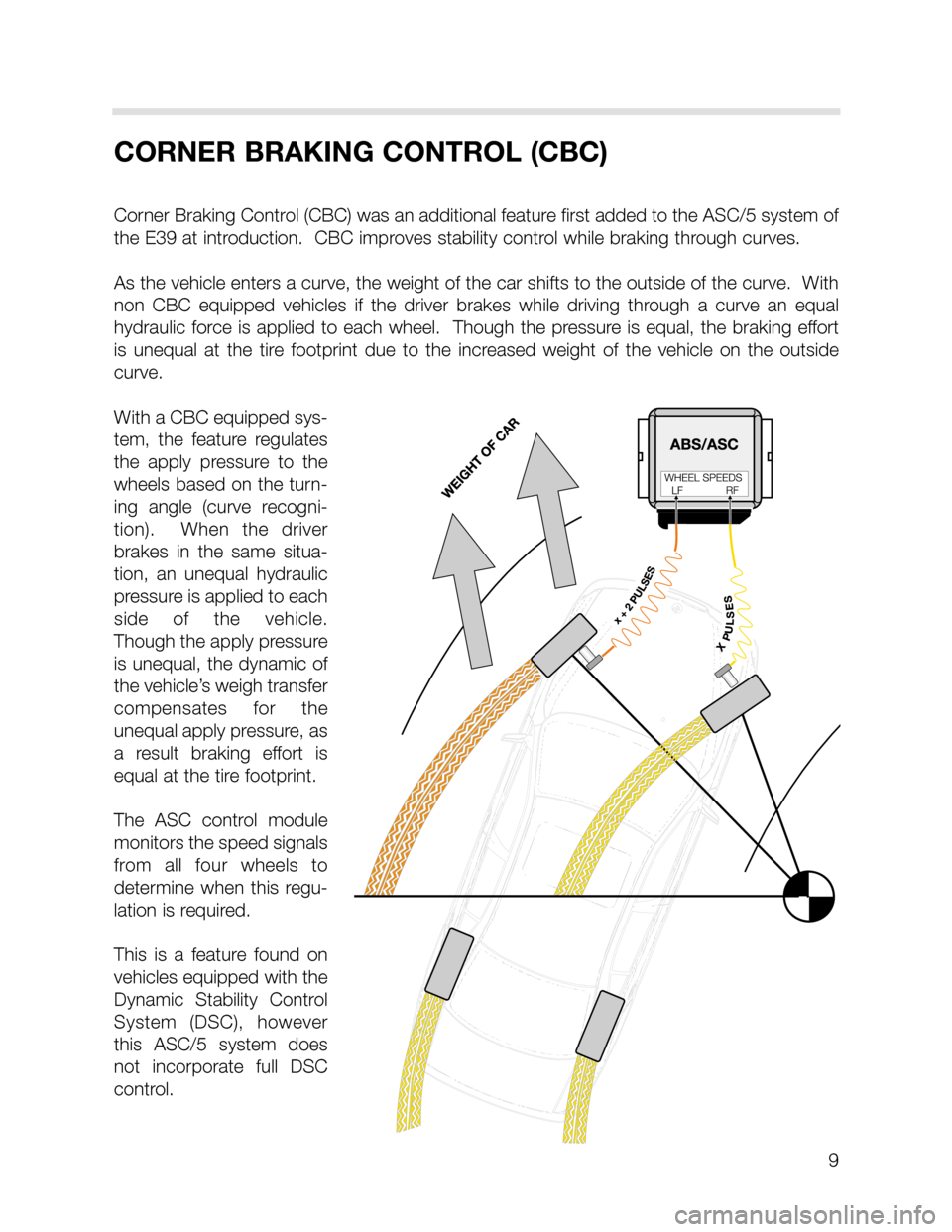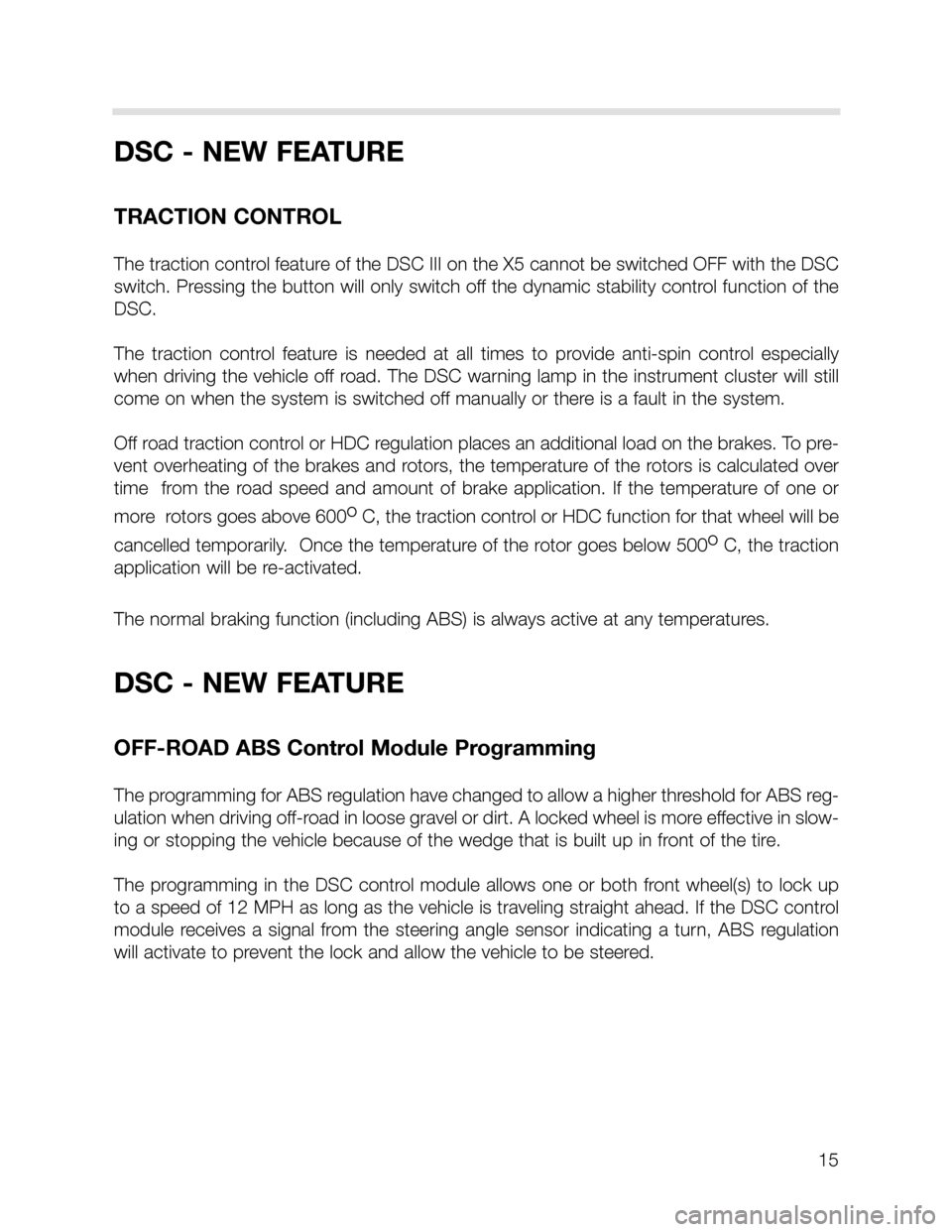turn signal BMW X5 2002 E53 DSC System Workshop Manual
[x] Cancel search | Manufacturer: BMW, Model Year: 2002, Model line: X5, Model: BMW X5 2002 E53Pages: 24, PDF Size: 1.77 MB
Page 9 of 24

CORNER BRAKING CONTROL (CBC)
Corner Braking Control (CBC) was an additional feature first added to the ASC/5 system of
the E39 at introduction. CBC improves stability control while braking through curves.
As the vehicle enters a curve, the weight of the car shifts to the outside of the curve. With
non CBC equipped vehicles if the driver brakes while driving through a curve an equal
hydraulic force is applied to each wheel. Though the pressure is equal, the braking effort
is unequal at the tire footprint due to the increased weight of the vehicle on the outside
curve.
With a CBC equipped sys-
tem, the feature regulates
the apply pressure to the
wheels based on the turn-
ing angle (curve recogni-
tion). When the driver
brakes in the same situa-
tion, an unequal hydraulic
pressure is applied to each
side of the vehicle.
Though the apply pressure
is unequal, the dynamic of
the vehicle’s weigh transfer
compensates for the
unequal apply pressure, as
a result braking effort is
equal at the tire footprint.
The ASC control module
monitors the speed signals
from all four wheels to
determine when this regu-
lation is required.
This is a feature found on
vehicles equipped with the
Dynamic Stability Control
System (DSC), however
this ASC/5 system does
not incorporate full DSC
control.
9
Page 15 of 24

15
DSC - NEW FEATURE
TRACTION CONTROL
The traction control feature of the DSC III on the X5 cannot be switched OFF with the DSC
switch. Pressing the button will only switch off the dynamic stability control function of the
DSC.
The traction control feature is needed at all times to provide anti-spin control especially
when driving the vehicle off road. The DSC warning lamp in the instrument cluster will still
come on when the system is switched off manually or there is a fault in the system.
Off road traction control or HDC regulation places an additional load on the brakes. To pre-
vent overheating of the brakes and rotors, the temperature of the rotors is calculated over
time from the road speed and amount of brake application. If the temperature of one or
more rotors goes above 600o
C, the traction control or HDC function for that wheel will be
cancelled temporarily. Once the temperature of the rotor goes below 500o
C, the traction
application will be re-activated.
The normal braking function (including ABS) is always active at any temperatures.
DSC - NEW FEATURE
OFF-ROAD ABS Control Module Programming
The programming for ABS regulation have changed to allow a higher threshold for ABS reg-
ulation when driving off-road in loose gravel or dirt. A locked wheel is more effective in slow-
ing or stopping the vehicle because of the wedge that is built up in front of the tire.
The programming in the DSC control module allows one or both front wheel(s) to lock up
to a speed of 12 MPH as long as the vehicle is traveling straight ahead. If the DSC control
module receives a signal from the steering angle sensor indicating a turn, ABS regulation
will activate to prevent the lock and allow the vehicle to be steered.